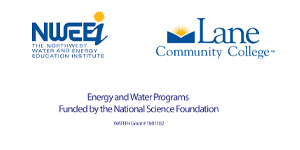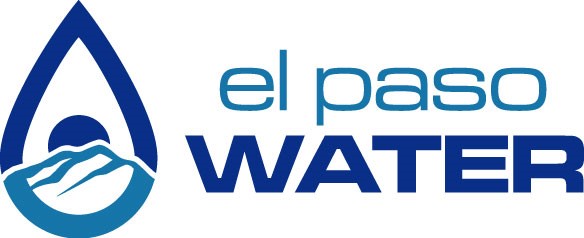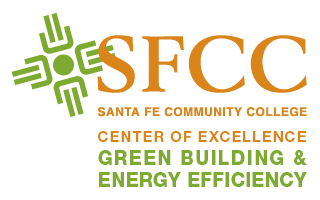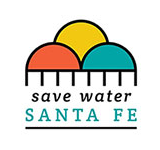2021 Next Generation Water Summit
All sessions now on-demand until August 2
Cancelling your registration will remove your access to the event. If you proceed, you will no longer be able to participate or access event-related materials.
Deleting your account will remove your access to the event.
Andrew Erdmann is a water conservation specialist for the City of Santa Fe. Andrew has been working in water rights and water management in Santa Fe since 2008 when he completed his masters degree at UNM and went to work for the New Mexico Office of the State Engineer. Andrew has been working for the City of Santa Fe since 2014 and his work includes water conservation, policy development, and water resource planning.
Professor Hayhoe will discuss why climate change matters to our planet and our civilization. Our society is built on the assumption that climate is stable, but it's not. The question is: how do we talk about it with people who don't believe it's happening? She'll also explore the effects of climate change and drought on building codes, agriculture, and the economy.
In this session, we'll take a look at both drought conditions and man-made water supply concerns in both Florida and southern California. We'll also explore the demand management measures being taken to help cope with these concerns in both regions of the U.S.
The EPA WaterSense staff has been diligently working over the last 3 years to overhaul the WaterSense for Homes program. Earlier in 2021, they announced a major shift in the program by allowing 3rd party verification programs to dual certify residential properties. They are also going to start quantifying the number of homes that obtain certification. Instead of going through the
details of the new program, we’re going to hear why homebuilders should sign up for the recently unveiled program.
The EPA WaterSense staff has been diligently working over the last 3 years to overhaul the WaterSense for Homes program. Earlier in 2021, they announced a major shift in the program by allowing 3rd party verification programs to dual certify residential properties. They are also going to start quantifying the number of homes that obtain certification. Instead of going through the
details of the new program, we’re going to hear why homebuilders should sign up for the recently unveiled program.
The 50 Litre Home Coalition (50L Home) is a global, action-orientated, multi-stakeholder platform that brings together private and public organisations, policymakers, researchers, cities and citizens to address two of the world’s most pressing global challenges: water security and climate change. This unprecedented collaborative effort aims to reinvent the future of urban water consumption in the homes, by making 50L of daily water use per person feel like 500 – at 0 carbon.
Sample 3
Sample 4
For the Southwest, building in times of drought is to understand it is a drought that will not end in our lifetimes. It shifts the paradigm for builders who have been conditioned to believe water hitting our roofs is a liability to be managed as opposed to an asset they must capture and re-use. If they don't accept the reality of diminshing resources and dramatically lower annual home consumption of delivered potable water, they will face moratoriums on new construction.
The water conservation office was opened within the utility when the City purchased the water company from PNM. The goal – to reduce water demand – was highly successful and total water use has declined by better than 30% since that time. The primary work of the water conservation office during that time has been: outreach and education about the importance of water conservation and strategies for conservation, ongoing work with the Land Use Department to improve the efficiency of new construction, and appliance retrofits which began with a Toilet Retrofit Program and has expanded to include most water using indoor appliances, outdoor irrigation equipment, and commercial retrofits. All of these initiatives sync with growth – outreach and education is an ongoing project and informs new and young residents about conservation, work with Land Use to improve building efficiency has resulted in improved efficiency in the existing and recent building stock of the city, and water conservation from rebates is quantified and deposited into the waterbank to account for development projects with small water budgets. The conservation from the rebate program is a limited and diminishing pool and makes between two and ten acre-feet per year of water available to support small development projects.
J.R. Robinson, Producer and Director of the in-development documentary project “Blood of the West” discusses some of the issues he’s found in his research on the Colorado River watershed regarding population growth and the decline of water resources in the Southwest. The discussion will revolve around the concept of “carrying capacity,” and the ways it is applied to the human population of the Colorado Watershed, using historic examples and population theories as well as looking at contemporary research and data pointing to some of the problems tied to uninhibited growth in the Southwest. Ultimately the question will be asked, how much of a role will water play in limiting future growth in the Southwest, and have we possibly reached a tipping point already?
Sample 8
Doug is a lifetime American Rainwater Catchment System Association (ARCSA) member, an Accredited Professional and an ex-Board member of ARCSA. He is a prolific writer and his articles have appeared in The New York Times, Water Efficiency Magazine, Home Power, Taos News and Water News, among others. He also has a regular monthly column in the Santa Fe New Mexican. He is co-author of two water studies that have been widely published: “Rainwater Harvesting Industry Market Size and Trends” and “First-Ever Long-Term Water Conservation Rebate Study”.
Doug is an EPA WaterSense Partner with Certification in Irrigation Auditing. He is an active member of the City of Santa Fe Water Conservation Committee. He is currently a member of the International Code Committee (ICC) working group that is drafting the ICC Rainwater Harvesting Building Codes. Doug is also a certified Permaculture Designer. Doug designs and consults on rainwater and water reuse systems locally and around the country.
2021 Next Generation Water Summit
All sessions now on-demand until August 2
2021 Next Generation Water Summit
June 2-4, 2021: 9am – 1pm MT
 2021-06-02 09:00:00 MT
2021-06-02 09:00:00 MT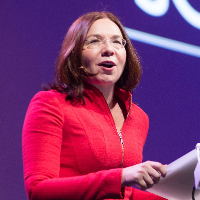 Speaker
SpeakerProfessor Katharine Hayhoe is The Nature Conservancy’s Chief Scientist and 2019 United Nations Champion of the Earth award winner. In addition to being a highly sought-after speaker, she is also director of the Climate Center, an associate in the Public Health program of the Graduate School of Biomedical Sciences at Texas Tech University, a principal investigator for the Department of Interior’s South-Central Climate Adaptation Science Center, the founder and CEO of ATMOS Research, a scientific advisor to 5 organizations and a television show producer.
 2021-06-02 10:20:00 MT
2021-06-02 10:20:00 MT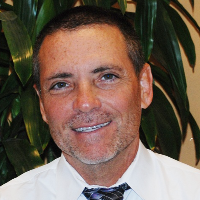 Speaker
Speaker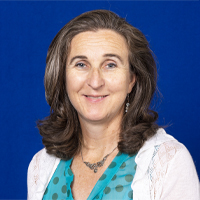 Panelist
Panelist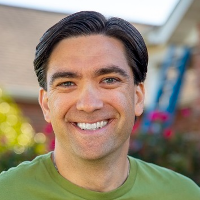 Moderator
ModeratorMike Collignon is the Executive Director of the Green Builder® Coalition, an organization he co-founded in 2010. He engages in national and state-level advocacy and publishes regular content for Green Builder® Media. Mike is also the Chair of the WERS Development Group and the Co-Chair of the Next Generation Water Summit. Finally, he has served as the voice of Green Builder® Media’s online and in-person events from 2012–present.
Bill McDonnell is the Manager of Water Efficiency for the Metropolitan Water District of Southern California. His team manages conservation programs for commercial, industrial, institutional and residential consumers covering MWD service area of 19 million
people. Bill has more than 40 years’ experience in both water and energy efficiency. He is on the Board of Directors of the Alliance for Water Efficiency, the California Water Efficiency Partnership and the California Irrigation Institute. Bill has a BA from the University of Massachusetts and an MBA from University of La Verne.
Deirdre Irwin is the Water Conservation Coordinator for the St. Johns River Water Management District. With over 29 years of experience at the District, she has worked with the agency’s surface water regulatory program, water resource education program, certification program development and water supply planning. Her work as the Florida Water StarSM Coordinator and Water Conservation Coordinator involves administering the Florida Water Star program and assisting with training and outreach for the program. Deirdre works closely with District staff in the development of regional water supply plans and coordinates a utility water conservation group that meets quarterly.
Deirdre serves on the board for the Florida Green Building Coalition and on the statewide Florida-Friendly Landscaping Advisory Committee. Deirdre serves as chair of the Water Use
Efficiency Division for the Florida Section of the AWWA.
 2021-06-02 11:25:00 MT
2021-06-02 11:25:00 MT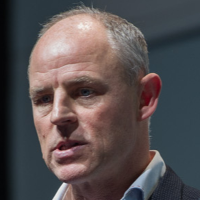 Speaker
SpeakerFrantz is the Head of R&D, Sustainable Innovation at Procter & Gamble (P&G), a multinational FMCG serving 5+ billion consumers in the world . With more than 20 years of experience at P&G R&D, Frantz is a passionate Innovation Leader with high sustained track-record across multiple categories and P&G and big iconic brands like Tide, Ariel, Swiffer, Mr. Clean. Frantz’ obsession is to “Make Sustainable Irresistible” to accelerate fastest adoption of sustainable solutions in the face of the climate urgency. This is what inspired him to invent and now spearhead the 50LH Coalition behind a simple question: “What if our future Homes could run at 50L water per day per person, yet “feel like” 500L”.
 Moderator
ModeratorThe 50 Litre Home Coalition (50L Home) is a global, action-orientated, multi-stakeholder platform that brings together private and public organisations, policymakers, researchers, cities and citizens to address two of the world’s most pressing global challenges: water security and climate change. This unprecedented collaborative effort aims to reinvent the future of urban water consumption in the homes, by making 50L of daily water use per person feel like 500 – at 0 carbon.
 2021-06-02 12:15:00 MT
2021-06-02 12:15:00 MT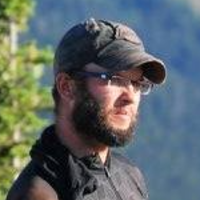 Speaker
SpeakerJ.R. Robinson is a west-coast based filmmaker and photographer with a passion for the American Southwest. His directing work on short film projects has been featured at numerous film festivals around the country, where they have won multiple awards. He is an alumnus of Chapman University’s prestigious Dodge College Graduate Film Program, where his thesis film, New World Water, took a narrative approach to tackling the water issues facing the West. His professional resume includes work in the production departments on over a dozen large television and film productions, including True Blood, The Dark Knight Rises, and Jane the Virgin, to name a few. Over the past five years, he has been operating as a freelance still photographer, exploring, shooting, and selling wall art prints through his photography company, Datura Photography. With Blood of the West, he is making a return to motion picture storytelling, marrying his passions for photography with his deep love of the Southwest, and a desire to protect the landscape that has provided so much artistic inspiration for him over the past decade.
Doug is a lifetime American Rainwater Catchment System Association (ARCSA) member, an Accredited Professional and an ex-Board member of ARCSA. He is a prolific writer and his articles have appeared in The New York Times, Water Efficiency Magazine, Home Power, Taos News and Water News, among others. He also has a regular monthly column in the Santa Fe New Mexican. He is co-author of two water studies that have been widely published: “Rainwater Harvesting Industry Market Size and Trends” and “First-Ever Long-Term Water Conservation Rebate Study”.
Doug is an EPA WaterSense Partner with Certification in Irrigation Auditing. He is an active member of the City of Santa Fe Water Conservation Committee. He is currently a member of the International Code Committee (ICC) working group that is drafting the ICC Rainwater Harvesting Building Codes. Doug is also a certified Permaculture Designer. Doug designs and consults on rainwater and water reuse systems locally and around the country.
 2021-06-03 09:00:00 MT
2021-06-03 09:00:00 MT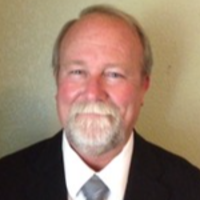 Panelist
PanelistDarrel McMaster is the CEO of Sustainable Homes, Inc. and a Master Builder. Sustainable Homes is a National Leader in building homes that generate all of their utility needs from the environment. They have recently completed their first Generation 6 home, a home that is being called Net Zero Carbon. All utilities for the home are generated on site including powering the owner’s electric vehicle. It is their 114th home that uses rainwater for all domestic water needs. Mr. McMaster speaks all over the country at Energy Fairs, Water Conferences and the National Irrigator Convention.
 Panelist
PanelistKim Shanahan has been a green builder in Santa Fe, New Mexico since 1986 and a residential sustainability consultant since 2018. From 2008 to 2018 he was the executive officer of the Santa Fe Area Home Builders Association where he established the local chapter as one of the most sustainability-focused in the national federation. He successfully introduced and help shepherd approval of Santa Fe's Water Efficiency Rating Score (WERS)® into the 2020 National Green Building Standard where it was revised to become the non-proprietary national Water Rating Index.
 Moderator
ModeratorMike Collignon is the Executive Director of the Green Builder® Coalition, an organization he co-founded in 2010. He engages in national and state-level advocacy and publishes regular content for Green Builder® Media. Mike is also the Chair of the WERS Development Group and the Co-Chair of the Next Generation Water Summit. Finally, he has served as the voice of Green Builder® Media’s online and in-person events from 2012–present.
 2021-06-03 10:20:00 MT
2021-06-03 10:20:00 MT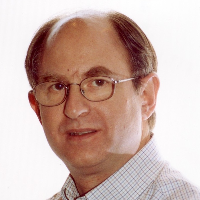 Speaker
SpeakerGary Klein, President of Gary Klein & Associates, Inc. has been intimately involved in energy efficiency and renewable energy since 1974. One fifth of his career was spent in the Kingdom of Lesotho, the rest in the United States. Mr. Klein has a passion for hot water: getting into it, getting out of it and efficiently delivering it to meet customer's needs. After serving 19 years with the
California Energy Commission, he has provided consulting on sustainability since 2008, with an emphasis on the water-energy-carbon connection. Mr. Klein received a BA from Cornell University in 1975 with an Independent Major in Technology and Society with an emphasis on energy conservation and renewable energy.
The International Association of Plumber and Mechanical Officials (IAPMO) recognized his efforts in 2014 presenting him their Green Professional of the Year award. In 2015 the Department of Energy awarded him the Jeffrey A. Johnson Award for Excellence in in the Advancement of Building Energy Codes.
Laureen holds Bachelor's and Master's degrees in architecture from the University of Illinois and is a licensed architect in Illinois & Wisconsin as well as having received approval for reciprocal licensure across the country via NCARB certification. She has also built a successful 30-year+ practice in the design and construction of commercial buildings, multi-family projects, single family homes, and interiors. Additional experience includes ratings, inspections, and certification application processing for a variety of commercial & residential properties through LEED BD+C, LEED ID+C, LEED for Homes & LEED for Homes Mid-Rise, Energy Star Homes & Energy Star Multifamily High Rise, Enterprise Green Communities, and the WERS (Water Efficiency Rating Score).
Other accreditations & certifications include USGBC LEED® for Homes QAD, RESnet/HERS Energy Rater, LEED for Homes Green Rater, LEED AP BD+C, LEED AP HOMES, USGBC LEED® Faculty™, and WERS Faculty & Verifier.
Once we build a very high-performance building from the perspective of heating, cooling and ventilation and install high efficiency lighting and plug loads, we are left with what to do about (hot) water. Hot water is a system: heater, distribution piping, plumbing fixtures and appliances, waste heat that runs down the drain. Cold water is a system, too. Overlay occupant behavior and then change technologies from what we are used to. To top it off, the way most of us were taught to design hot water systems is based on information that is more than 50 years out of date. This session will present practical measures you can incorporate into your next project that result in high performance (hot) water systems and very satisfied customers.
Bonus - How does all this help you do better in Green Building and LEED for Homes?
 2021-06-03 11:25:00 MT
2021-06-03 11:25:00 MT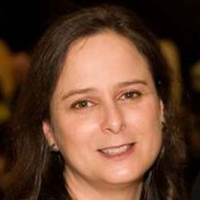 Co-Presenter
Co-PresenterLaureen holds Bachelor's and Master's degrees in architecture from the University of
Illinois and is a licensed architect in Illinois & Wisconsin as well as having received approval for reciprocal licensure across the country via NCARB certification. She has also built a successful 30-year+ practice in the design and construction of commercial buildings, multi-family projects, single family homes, and interiors. Additional experience includes ratings, inspections, and certification application processing for a variety of commercial &
residential properties through LEED BD+C, LEED ID+C, LEED for Homes & LEED
for Homes Mid-Rise, Energy Star Homes & Energy Star Multifamily High Rise, Enterprise Green Communities, and the WERS (Water Efficiency Rating Score).
Other accreditations & certifications include USGBC LEED® for Homes QAD, RESnet/HERS Energy Rater, LEED for Homes Green Rater, LEED AP BD+C, LEED AP HOMES, USGBC LEED® Faculty™, and WERS Faculty & Verifier.
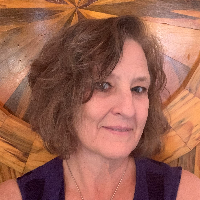 Co-Presenter
Co-PresenterMs. Mortimer launched a climate change and sustainability consulting business, Pax Consulting, after leaving the position of Sustainability Officer at the City of Santa Fe, NM in order to assist local governments and other organizations develop and implement effective, measurable and equitable climate change action and resiliency plans. She has a Bachelor of Architecture from the California College of the Arts and a Master of Environmental Planning from the University of California at Berkeley.
 Moderator
ModeratorRaised in Breckenridge, Colorado and migrated to the Santa Fe area in the early 90’s, Miles is a product of the American West. He lives in Rio en Medio with a view of the Pojoaque Valley that will not quit, alongside his wife of 23 years, Mikahla Beutler and son, Tilman.
Prior to serving as executive officer for the Santa Fe Area Home Builders Association, Miles had a long career with New Mexico Labor unions, serving as a communications professional, organizer, and political coordinator for both the public sector, and the professional trades union locals. Most recently, he was a fundraising and communications coordinator at New Energy Economy, working to bring the Santa Fe community greater accessibility to local renewable energy resources.
Along with a tech savvy know-how, Miles brings his relationship building skills to the Association and is enthusiastically incorporating bold new ideas into the association’s already robust presence in the community.
In March 2017, the City of Santa Fe enacted an innovative, performance-based water efficiency code requirement for all new single-family residences. After 3 years, they wanted to know if their code was having the desired effect: driving water use down. As the owner of the water utility, the city has access to water use data for not only pre-code, unrated homes, but current water use data for all homes. In the process of analyzing the water efficiency rating system, Santa Fe’s land use planners and sustainability team were prompted to use the data to learn more about water use patterns. Find out what the data has indicated about the effectiveness of the water efficiency ratings, the changes in water usage over the first 3 years in a new home, the accuracy of the water ratings’ water use projections, and the lessons learned about using a performance based water efficiency rating system.
 2021-06-03 12:10:00 MT
2021-06-03 12:10:00 MTKim Shanahan will lead a discussion with Cindy Wasser and Craig Connor on how the Water Rating Index (WRI) was established in the 2020 National Green Building Standard and how it can be used by water jurisdictions facing pressures of growth with limited and declining allocations of water. You can't manage what you're not measuring, especially new residential growth. The WRI is a predictive water-usage calculation tool based on a zero to 100 scale with zero being net zero water usage. The index can calculate projected gallons of annual usage and can predict how many new homes can be sustained by an acre foot of available water.
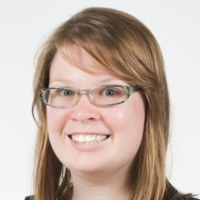 Panelist
PanelistCindy Wasser, MBA is the Senior Manager of Green Building Programs at Home Innovation Research Labs. In this role, she provides strategic support to the NGBS Green Certification program, and her efforts have contributed to the program becoming the leading green building certification program for residential construction. Cindy leads the development of new program features and tools that are utilized by verifiers and developers seeking green certification. In 2020, Cindy was recognized by Professional Builder magazine as a 40-under-40 rising star in the homebuilding industry.
Previously, Cindy was a consultant with ICF where she supported the implementation of the U.S. EPA’s residential labeling programs, namely ENERGY STAR, Indoor airPLUS, and WaterSense. In earlier roles, Cindy provided sustainability technical assistance at the National Association of Counties (NACo) and led community engagement efforts for the City Planning Department of Montpelier, Vermont. Cindy holds an MBA in Sustainability from Bard College and a B.S. in U.S. Environmental Policy and from Rutgers University.
 Panelist
PanelistCraig Connor is a national energy codes expert with a long history of working with the National Association of Home Builders on energy code developments. As a western Washington resident, he saw the relevance of a national Water Rating Index and shepherded the transition of Santa Fe's WERS program to become the WRI through the ANSI consensus process that established the 2020 National Green Building Standard.
 Moderator
ModeratorKim Shanahan has been a green builder in Santa Fe, New Mexico since 1986 and a residential sustainability consultant since 2018. From 2008 to 2018 he was the executive officer of the Santa Fe Area Home Builders Association where he established the local chapter as one of the most sustainability-focused in the national federation. He successfully introduced and help shepherd approval of Santa Fe's Water Efficiency Rating Score (WERS)® into the 2020 National Green Building Standard where it was revised to become the non-proprietary national Water Rating Index.
Kim Shanahan will lead a discussion with Cindy Wasser and Craig Connor on how the Water Rating Index (WRI) was established in the 2020 National Green Building Standard and how it can be used by water jurisdictions facing pressures of growth with limited and declining allocations of water. You can't manage what you're not measuring, especially new residential growth. The WRI is a predictive water-usage calculation tool based on a zero to 100 scale with zero being net zero water usage. The index can calculate projected gallons of annual usage and can predict how many new homes can be sustained by an acre foot of available water.
 2021-06-04 09:00:00 MT
2021-06-04 09:00:00 MTFriday Keynote
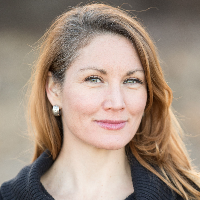 Speaker
SpeakerMelanie Stansbury is a Candidate for Congress and State Legislator, proudly representing New Mexico’s 28th District in the New Mexico State House of Representatives. Professionally Melanie works as a consultant and senior advisor to non-profit, philanthropic, and research organizations on strategies to help build a more sustainable world—with a focus on water security, natural resources, and community development. A sociologist by training, with a background in the natural sciences, Melanie has worked across the U.S. with federal, tribal, state, and local organizations, including as staff in the U.S. Senate Committee on Energy and Natural Resources and the Office of Management and Budget.
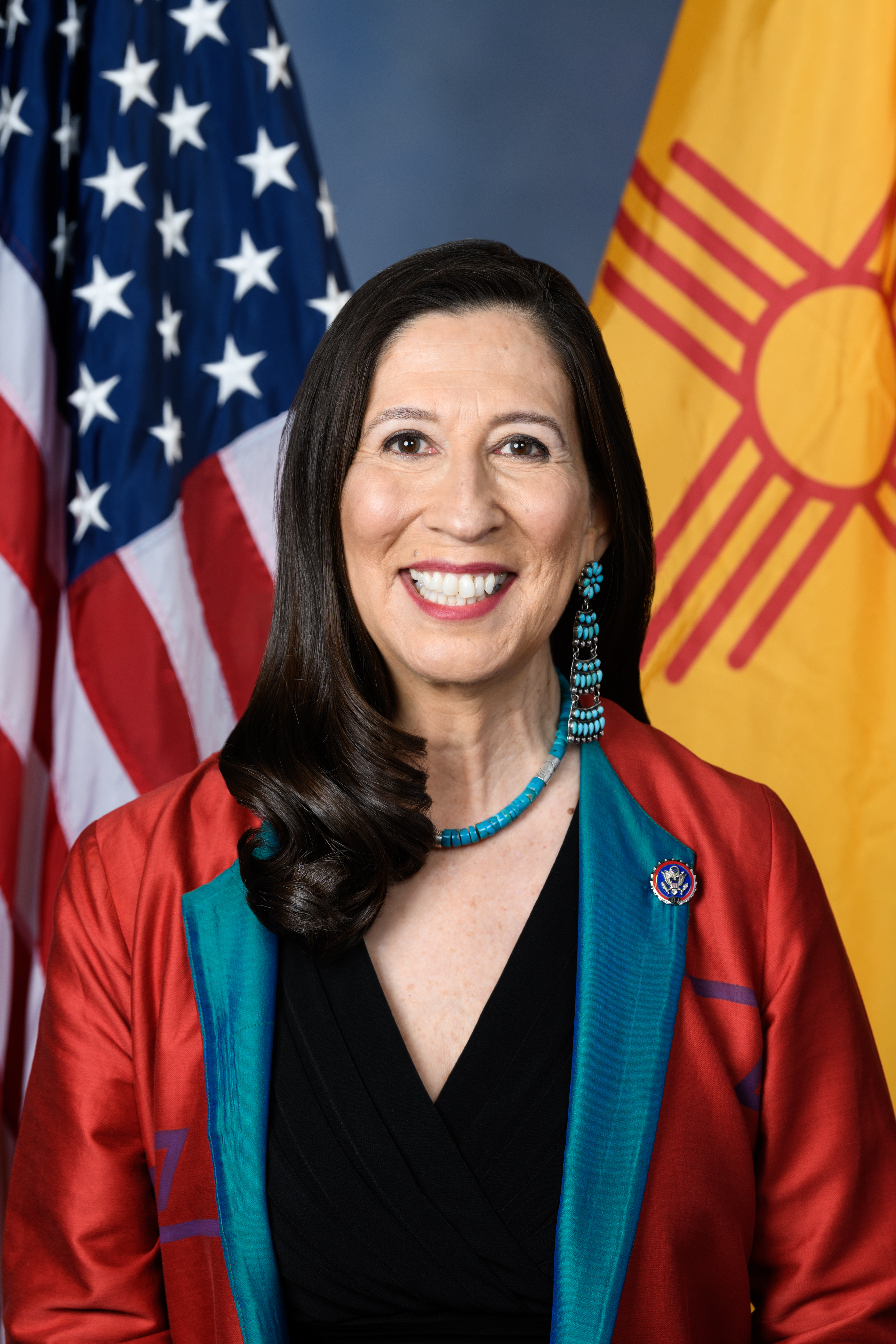 Speaker
SpeakerCongresswoman Teresa Leger Fernández represents New Mexico’s 3rd Congressional District. In Washington, she holds a leadership role with the Congressional Hispanic Caucus as Freshman Representative. Congresswoman Leger Fernández serves as chair of the Subcommittee for Indigenous Peoples of the United States for the 117th Congress. She has also been appointed to the House Committee on Education and Labor, the House Committee on Natural Resources, and the Committee on House Administration.
She is a 17th generation Northern New Mexican. Before coming to Congress, Leger Fernández worked as an attorney and advocate, and won important legal battles to advance voting rights, promote tribal sovereignty, and protect our environment and acequia waters. She has helped secure nearly a billion dollars for, and then helped build, schools, rural health clinics, broadband, businesses, affordable housing and critical infrastructure for New Mexico.
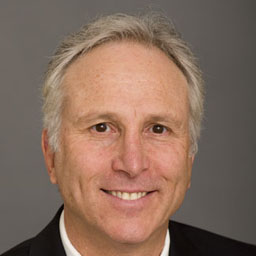 Moderator
ModeratorGlenn Schiffbauer, Executive Director of the Santa Fe Chapter of the New Mexico Green Chamber of Commerce, is a native New Mexican. He received his BBA from New Mexico State University and his MBA from the Robert O. Anderson School of Management at the University of New Mexico. After 16 years in management at renowned Rancho Encantado, he started two small businesses in Santa Fe. He also worked with his wife Kim as a consultant for businesses statewide in both marketing and public affairs. In 2005, he became a liaison and project manager for Robert Redford in New Mexico working on a variety of projects from film to governmental to green construction. In October 2012, he became Executive Director for the newly founded Santa Fe Chapter of the New Mexico Green Chamber of Commerce.
 2021-06-04 10:05:00 MT
2021-06-04 10:05:00 MT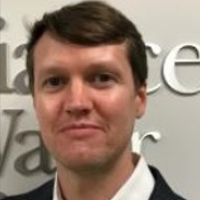 Panelist
PanelistBill Christiansen is the Director of Programs for the Alliance for Water Efficiency. Bill has been in the water industry since 2002 when he got his start working for Planning and Management Consultants, Ltd. in Carbondale, IL. Bill joined the Alliance for Water Efficiency in 2007. Bill’s work has included research related to many facets of water resource management such as policy analysis, water conservation program planning and evaluation, benefit-cost analysis, drought planning, and water rate evaluation.
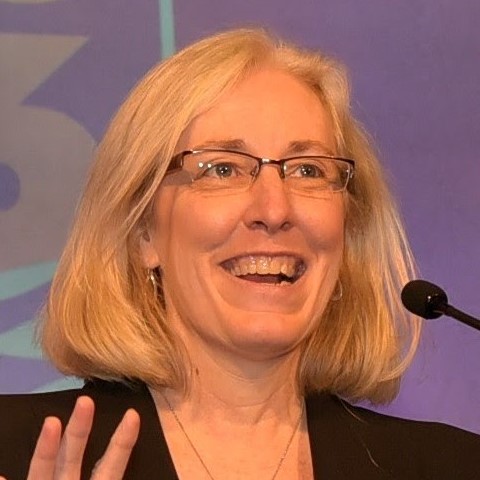 Panelist
PanelistVeronica Blette manages the WaterSense program in the U.S. Environmental Protection Agency’s (EPA) Office of Water.
Prior to Ms. Blette’s current position, she served as special assistant to the director of the National Drinking Water Program and led the EPA’s Drinking Water Infrastructure Financing Program.
Before joining the EPA in 1997, Ms. Blette worked in the academic research and environmental consulting fields on projects investigating the effects of atmospheric deposition on soils and water quality. She has a Bachelor of Arts in geology from Smith College and a Master of Science in geology from the University of Massachusetts at Amherst.
 Moderator
ModeratorChristine Y. Chavez has a background in water rights administration and energy & water conservation program management in the state of New Mexico. Christine is the Water Conservation Manager for the City of Santa Fe and is a certified Energy Auditor with the Building Performance Institute, Certified Landscape Irrigation Auditor with the Irrigation Association and Qualified Water Efficient Landscaper through EPA WaterSense.
She is a graduate of New Mexico State University (B.S. in Environmental Science and M.S. in Biology).
 2021-06-04 11:05:00 MT
2021-06-04 11:05:00 MTMost communities in the west have successful water conservation programs. These programs are funded by the community or the local water utility. Private/public sources of monies are available to expand the reach of traditional water conservation programs. These funds could be used to reach the more underserved communities traditional programs have not been able to reach. This panel will expound upon some of these sources of funding and how they might be applied to address social equity water issues in a community.
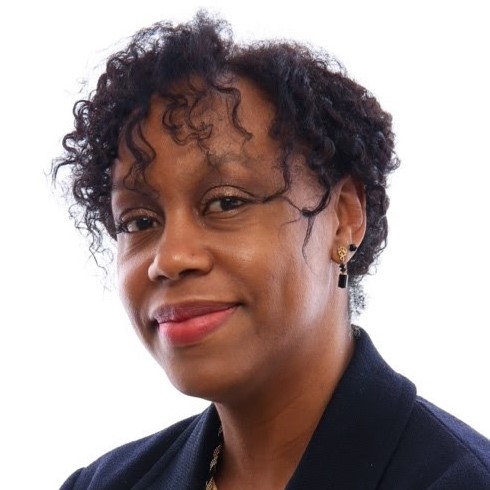 Panelist
PanelistArthine is a globally respected leader known for her collaborative approaches at the nexus of water, finance, technology, innovation, and resilient ecosystems. In 2015, she launched WaterFunder, a water infrastructure project finance advisory firm, after mentoring water technology firms. Arthine has global management experience in the public, private, government, academic, start-up, and non-profit industry sectors. She has crafted and implemented growth and expansion strategies for development banks, foreign direct investment agencies, water utilities, capital markets firms, and Silicon Valley tech giants. Arthine is an Army veteran and a Russian linguist, having held roles in data management, military intelligence and civil affairs. Arthine is an angel investor and start-up advisor who invests her resources in prescient business models and solutions to help an ever-changing world. She has an Economics BA from UC Davis and an MBA from IMD in Switzerland.
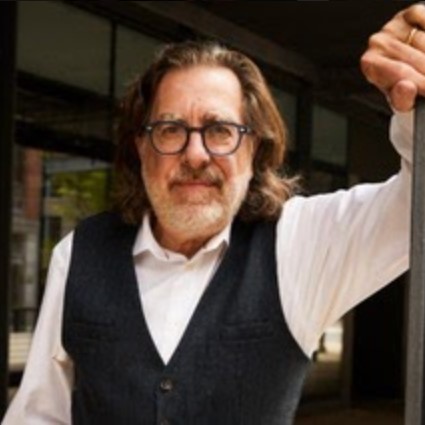 Panelist
PanelistWill is an internationally recognized thought leader on water strategy and innovation. He has been a sustainability and water strategy advisor to multinationals, water technology companies and NGOs for his entire career. Will works with multinationals on corporate water strategies, water technology innovation and water market entry strategies. His work with water technology companies is as a strategy advisor and investor.
He is currently working on: "DIGITAL WATER: New Technologies for a More Resilient, Secure and Equitable Water Future."
 Moderator
ModeratorDoug is a lifetime American Rainwater Catchment System Association (ARCSA) member, an Accredited Professional and an ex-Board member of ARCSA. He is a prolific writer and his articles have appeared in The New York Times, Water Efficiency Magazine, Home Power, Taos News and Water News, among others. He also has a regular monthly column in the Santa Fe New Mexican. He is co-author of two water studies that have been widely published: “Rainwater Harvesting Industry Market Size and Trends” and “First-Ever Long-Term Water Conservation Rebate Study”.
Doug is an EPA WaterSense Partner with Certification in Irrigation Auditing. He is an active member of the City of Santa Fe Water Conservation Committee. He is currently a member of the International Code Committee (ICC) working group that is drafting the ICC Rainwater Harvesting Building Codes. Doug is also a certified Permaculture Designer. Doug designs and consults on rainwater and water reuse systems locally and around the country.
 2021-06-04 12:15:00 MT
2021-06-04 12:15:00 MT Panelist
PanelistDoug is a lifetime American Rainwater Catchment System Association (ARCSA) member, an Accredited Professional and an ex-Board member of ARCSA. He is a prolific writer and his articles have appeared in The New York Times, Water Efficiency Magazine, Home Power, Taos News and Water News, among others. He also has a regular monthly column in the Santa Fe New Mexican. He is co-author of two water studies that have been widely published: “Rainwater Harvesting Industry Market Size and Trends” and “First-Ever Long-Term Water Conservation Rebate Study”.
Doug is an EPA WaterSense Partner with Certification in Irrigation Auditing. He is an active member of the City of Santa Fe Water Conservation Committee. He is currently a member of the International Code Committee (ICC) working group that is drafting the ICC Rainwater Harvesting Building Codes. Doug is also a certified Permaculture Designer. Doug designs and consults on rainwater and water reuse systems locally and around the country.
 Panelist
PanelistGlenn Schiffbauer, Executive Director of the Santa Fe Chapter of the New Mexico Green Chamber of Commerce, is a native New Mexican. He received his BBA from New Mexico State University and his MBA from the Robert O. Anderson School of Management at the University of New Mexico. After 16 years in management at renowned Rancho Encantado, he started two small businesses in Santa Fe. He also worked with his wife Kim as a consultant for businesses statewide in both marketing and public affairs. In 2005, he became a liaison and project manager for Robert Redford in New Mexico working on a variety of projects from film to governmental to green construction. In October 2012, he became Executive Director for the newly founded Santa Fe Chapter of the New Mexico Green Chamber of Commerce.
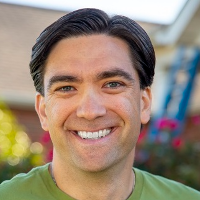 Panelist
PanelistMike Collignon is the Executive Director of the Green Builder® Coalition, an organization he co-founded in 2010. He engages in national and state-level advocacy and publishes regular content for Green Builder® Media. Mike is also the Chair of the WERS Development Group and the Co-Chair of the Next Generation Water Summit. Finally, he has served as the voice of Green Builder® Media’s online and in-person events from 2012–present.
 021-06-04 10:20:00 MT
021-06-04 10:20:00 MT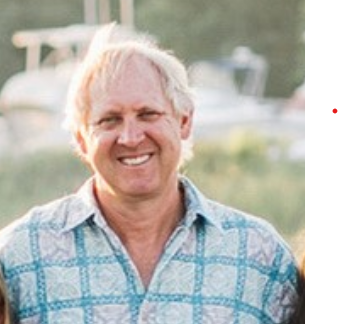 Speaker
Speaker Moderator
ModeratorGlenn Schiffbauer, Executive Director of the Santa Fe Chapter of the New Mexico Green Chamber of Commerce, is a native New Mexican. He received his BBA from New Mexico State University and his MBA from the Robert O. Anderson School of Management at the University of New Mexico. After 16 years in management at renowned Rancho Encantado, he started two small businesses in Santa Fe. He also worked with his wife Kim as a consultant for businesses statewide in both marketing and public affairs. In 2005, he became a liaison and project manager for Robert Redford in New Mexico working on a variety of projects from film to governmental to green construction. In October 2012, he became Executive Director for the newly founded Santa Fe Chapter of the New Mexico Green Chamber of Commerce.
The City of Santa Fe, New Mexico (Santa Fe) conjunctively manages 4 hydrologically distinct water supply sources together with an advanced water conservation and water reclamation program. These source of supply are comprised of both surface water from the Santa Fe River and San Juan Chama Project (SJCP), and groundwater from the City and Buckman well fields. Each of these supplies are vulnerable to impacts from long-term drought, watershed forest fires and numerous other water quality challenges. Santa Fe is evaluating adaptive water resources management strategies to build greater system resiliency and a more comprehensive and balanced water supply in face of changing climactic conditions. The need for these strategies was highlighted by the findings of the 2015 Santa Fe Basin Study (Study), completed in collaboration with Santa Fe County and the U.S. Bureau of Reclamation, which concluded there is a high likelihood for acute water supply shortages in Santa Fe by 2055, unless adaption strategies are implemented for expanded supply and greater resilience.
This presentation is designed to share ways that Santa Fe is working towards building greater water supply resiliency through technical analyses that are being conducted on several water supply adaptation strategies identified in the Study. These strategies include innovative water conservation, water reclamation, aquifer recharge management in the City and Buckman Well Fields, and optimizing the use of Santa Fe’s imported SJCP water through reclamation programs.
Bill Schneider has 30 years of experience practicing in the field of geohydrology and sustainable water resources management with emphasis in conjunctive surface and ground water management strategies utilizing integrated GIS-based data management and modeling techniques. He holds a bachelors in Geology from University of Maine-Farmington, and a Masters in Hydrogeology from Temple University.
 2021-06-04 11:25:00 MT
2021-06-04 11:25:00 MT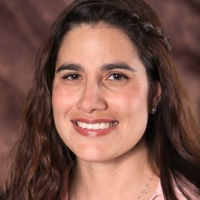 Speaker
SpeakerChristine Y. Chavez has a background in water rights administration and energy & water conservation program management in the state of New Mexico. Christine is the Water Conservation Manager for the City of Santa Fe and is a certified Energy Auditor with the Building Performance Institute, Certified Landscape Irrigation Auditor with the Irrigation Association and Qualified Water Efficient Landscaper through EPA WaterSense.
She is a graduate of New Mexico State University (B.S. in Environmental Science and M.S. in Biology).
 Speaker
Speaker Moderator
ModeratorMike Collignon is the Executive Director of the Green Builder® Coalition, an organization he co-founded in 2010. He engages in national and state-level advocacy and publishes regular content for Green Builder® Media. Mike is also the Chair of the WERS Development Group and the Co-Chair of the Next Generation Water Summit. Finally, he has served as the voice of Green Builder® Media’s online and in-person events from 2012–present.
 2021-06-04 12:15:00 MT
2021-06-04 12:15:00 MTCity of Santa Fe officials will be taking your questions on drought, growth, and the effects on the local water supply.
 Panelist
Panelist Panelist
PanelistElias Isaacson is the Planning and Land Use Director for the City of Santa Fe, NM. He is a Registered Architect in the State of New Mexico and a member of the AIA. He is also an AICP Certified Planner, an ICC Certified Building Official, and a LEED Accredited Professional. Elias has extensive experience working with local design professionals, and has completed multiple independent planning and development projects for clients in both the US and abroad. Before joining the City of Santa Fe, Elias spent two years as Planning and Land Use Director and Interim City Manager for the City of Espanola. During this time, he led a city-wide effort to draft and adopt a new Comprehensive Plan for the City. The Plan, "Espanola: Beyond Boundaries", received the 2018 NM APA Award for Excellence in Comprehensive Planning. Elias is a graduate of the University of Wisconsin (BA in Geography), and the University of Pennsylvania (Master of City Planning and Master Certificate in Urban Design and Development). He studied architecture at the University of New Mexico, where he earned his Master of Architecture degree in 2012.
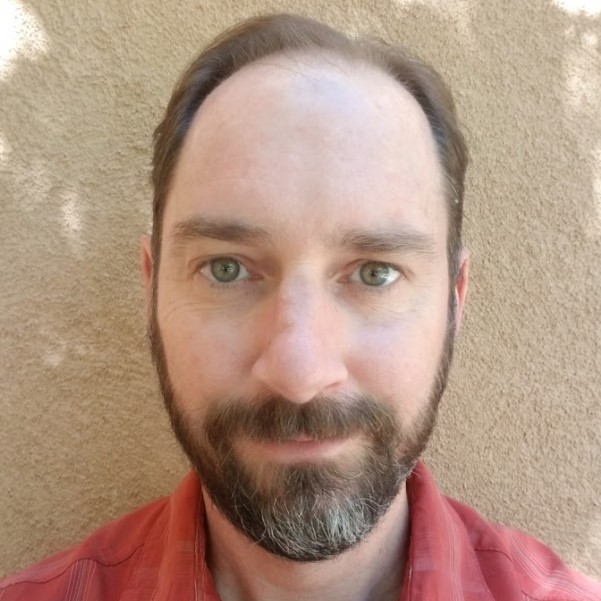 Panelist
PanelistJason is a forty year resident of Santa Fe and has over twenty five years’ experience in design, construction and project management, working independently, and with architectural and design/build firms on a wide range of residential, commercial and institutional projects. Jason has been with the City since 2009, first working in the Public Works Department, helping develop and manage numerous facility and parks capital improvement and other projects to fruition. Jason has been with the Land Use Department since October of 2019, overseeing Development Branch operations including the building permitting, inspections and engineering divisions. Jason is a graduate of The University of Texas at Arlington where he studied architecture and earned a Bachelor of Science degree in Architecture in 1994 and Master of Architecture in 1996.
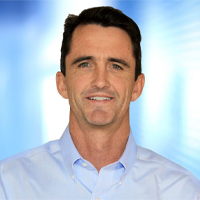 Panelist
Panelist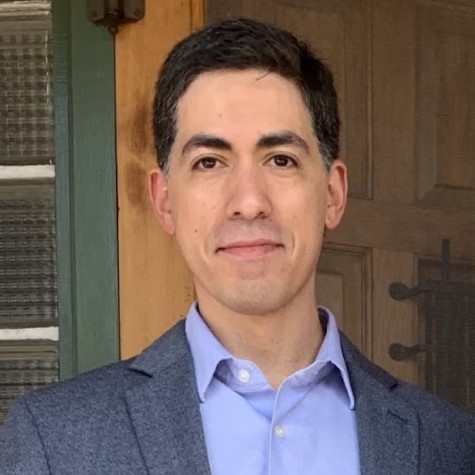 Panelist
PanelistMarcos D. Martinez earned his B.A. in English Literature from Colby College in Waterville, Maine, his M.A. in Comparative Literature from the University of New Mexico, where he earned his J.D. as well, with a specialization in Natural Resources. Mr. Martinez was a director on the Natural Resources, Energy, and Environmental Law (NREEL) Section of the State Bar. Mr. Martinez has worked in private practice and as a public lawyer. He has represented the City of Santa Fe in water cases in State and Federal Court. He is currently the Senior Assistant City Attorney for the City of Santa Fe.
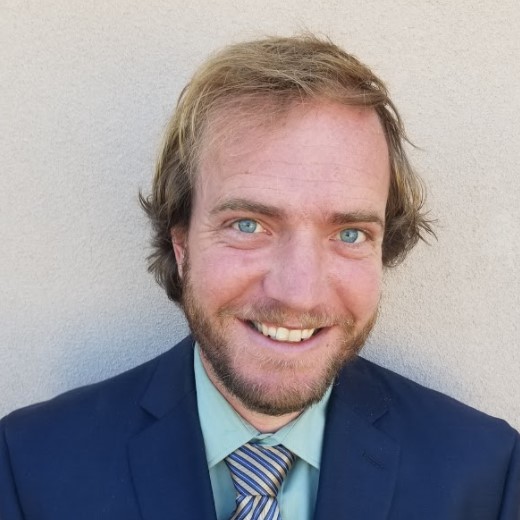 Panelist
PanelistNeal Denton is the Sustainability Planner for the City of Santa Fe where he coordinates efforts to implement the city’s sustainability and resilience goals. He has more than eleven years of experience working in the fields of sustainable materials management, transportation, clean energy, and surface water quality. Neal holds a Bachelor of Science degree in Geography from Texas State University and serves on the Land of Enchantment Clean Cities Coalition Board of Directors, the Santa Fe Emergency Management Coordinating Group, and the North Central Regional Transportation District Sustainability Committee.
Jesse Roach P.E. Ph.D. is Director of City of Santa Fe Water, a position he has held since July 2019. At City of Santa Fe Water, Jesse has led a strategic planning effort, led development of a long range water resources planning process, and provided leadership in support of new water resources development. Jesse’s technical areas of expertise include municipal operations and demand, potential climate change impacts on water resources, surface water – groundwater dynamics, and agricultural operations and demand. Jesse was the technical lead on an assessment of potential climate change impacts to water resources, and possible resulting changes to water operations in the Upper Rio Grande basin (http://www.usbr.gov/WaterSMART/wcra/reports/urgia.html), and a contributor to technical evaluation of water utility scale adaptation to potential hydrologic impacts of climate change in Santa Fe (https://www.usbr.gov/watersmart/bsp/docs/finalreport/SantaFe/Santa-Fe-Basin-Final.pdf).
Jesse holds Bachelor and Master’s degrees in Civil and Environmental Engineering from Stanford, and a Ph.D. from the University of Arizona in Hydrology and Water Resources.
Christine Y. Chavez has a background in water rights administration and energy & water conservation program management in the state of New Mexico. Christine is the Water Conservation Manager for the City of Santa Fe and is a certified Energy Auditor with the Building Performance Institute, Certified Landscape Irrigation Auditor with the Irrigation Association and Qualified Water Efficient Landscaper through EPA WaterSense.
She is a graduate of New Mexico State University (B.S. in Environmental Science and M.S. in Biology).
Carol Romero-Wirth is serving her first term as a Santa Fe City Councilor. Carol’s New Mexico roots go back generations from Mora, New Mexico. She grew up in Colorado and graduated from Colorado College with a bachelor’s degree in Political Science. Carol holds a master’s degree in Public Policy from the Lyndon B. Johnson School of Public Affairs at the University of Texas in Austin. Her law degree is from the University of New Mexico. She was admitted to the New Mexico Bar in 1998. Over the last thirty years Carol’s work has focused in public policy, government and politics. She served as a commissioner on the City Charter Review Commission, was the first associate director at Think New Mexico, and she has also worked as a public policy consultant on water, environment and sustainability projects. In addition, she worked for the New Mexico Legislature as a bill drafter and professional staff at the Legislative Council Service.
 2021-06-02 00:00:00 MT
2021-06-02 00:00:00 MT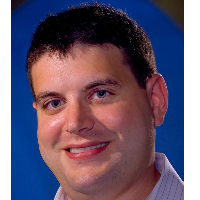 Speaker
SpeakerJonah Schein is the National Program Coordinator for Homes & Buildings at the U.S. Environmental Protection Agency’s (EPA) WaterSense® Program. He has overseen the technical development and implementation of the WaterSense Homes specification and certification system since their inception. He is also responsible for efforts to expand the WaterSense program’s reach in the multi-family and commercial sectors through analytics, modeling, and benchmarking.
Prior to joining EPA in 2008, Mr. Schein served as the Director of Outreach for Earth Day Network (EDN) where he was responsible for a number of initiatives to promote water efficiency through green building strategies in the United States and Middle East. Mr. Schein holds Bachelor of Arts and Bachelor of Science degrees from Indiana University as well as a Master of Science in Environmental Science from the Johns Hopkins University.
 2021-06-02 00:00:00 MT
2021-06-02 00:00:00 MT Speaker
SpeakerLaureen holds Bachelor's and Master's degrees in architecture from the University of
Illinois and is a licensed architect in Illinois & Wisconsin as well as having received approval for reciprocal licensure across the country via NCARB certification. She has also built a successful 30-year+ practice in the design and construction of commercial buildings, multi-family projects, single family homes, and interiors. Additional experience includes ratings, inspections, and certification application processing for a variety of commercial &
residential properties through LEED BD+C, LEED ID+C, LEED for Homes & LEED
for Homes Mid-Rise, Energy Star Homes & Energy Star Multifamily High Rise, Enterprise Green Communities, and the WERS (Water Efficiency Rating Score).
Other accreditations & certifications include USGBC LEED® for Homes QAD, RESnet/HERS Energy Rater, LEED for Homes Green Rater, LEED AP BD+C, LEED AP HOMES, USGBC LEED® Faculty™, and WERS Faculty & Verifier.
 2021-06-02 00:00:00 MT
2021-06-02 00:00:00 MT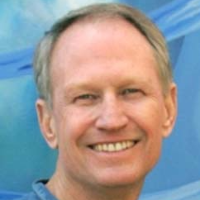 Co-Presenter
Co-PresenterDoug is a lifetime American Rainwater Catchment System Association (ARCSA) member, an Accredited Professional and an ex-Board member of ARCSA. He is a prolific writer and his articles have appeared in The New York Times, Water Efficiency Magazine, Home Power, Taos News and Water News, among others. He also has a regular monthly column in the Santa Fe New Mexican. He is co-author of two water studies that have been widely published: “Rainwater Harvesting Industry Market Size and Trends” and “First-Ever Long-Term Water Conservation Rebate Study”.
Doug is an EPA WaterSense Partner with Certification in Irrigation Auditing. He is an active member of the City of Santa Fe Water Conservation Committee. He is currently a member of the International Code Committee (ICC) working group that is drafting the ICC Rainwater Harvesting Building Codes. Doug is also a certified Permaculture Designer. Doug designs and consults on rainwater and water reuse systems locally and around the country.
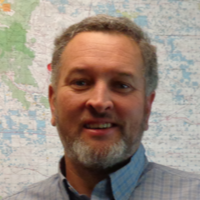 Co-Presenter
Co-PresenterMichael Broussard is the Environmental Health Bureau's Liquid Waste Specialist. For the past 8 years, he has been an Inspector for Santa Fe District II, Office of the NMED Environmental Health Bureau. He and three other liquid waste specialists within the state provide environmental health technical support for the liquid waste program. Michael currently serves as the past president of the New Mexico Environmental Health Association. The association is primarily responsible for providing training for environmental health professionals in the state.
Michael graduated from Lamar University in Beaumont Texas with a BS in Chemistry and minor in Bio-chemistry. He served in the US Army for ten years in the Nuclear-Biological and Chemical Officer’s Corp. Michael has worked for 20 years in the private sector for General-Mills, Georgia Pacific, Exxon-Mobil, and Johnson & Johnson, as well as owing a small business in the metal finishing industry and, currently, an indoor air quality company.
 2021-06-02 00:00:00 MT
2021-06-02 00:00:00 MT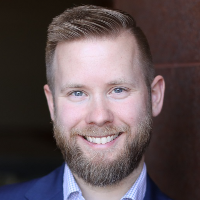 Panelist
PanelistChristoph Lohr is IAPMO’s Vice President of Strategic Initiatives. As part of his duties he provides industry leadership through participation in strategic industry initiatives, and provide technical support to all IAPMO’s business units as needed. He has over a decade of experience in designing plumbing systems for healthcare, laboratory, hospitality, sports, and university projects. He is a licensed professional engineer (PE) in six states, has his Certified-in-Plumbing-Design (CPD) certification from ASPE, is a LEED AP BD+C, and has his ASSE 12080 Legionella Mitigation Specialist designation. He has spoken at the ASPE 2018 Convention, Legionella 2018 and 2019 conferences, HITS Consortium, NIBS, and the ACEEE Hot Water Forum and has written over 50 articles and blog posts on the topics of water, legionella, medical gas, and leadership. Christoph's professional activities in the industry extend into multiple committees including ASPE Phoenix Chapter, ASPE Society, ASPE Legionella Working Group, ASHRAE Committees, PIPE Trust of Arizona, AWWA Plumbing Premise Committee, among others. He consistently looks to find long-term, holistic solutions that positively impact public health and safety, particularly in the world of water and plumbing. He is a distinguished graduate from the Virginia Military Institute, with a Bachelor of Science in Mechanical Engineering.
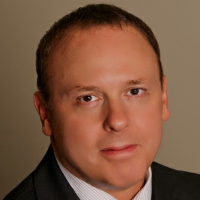 Panelist
PanelistDaniel Cole is Sr. Director of Technical Services at International Association of Plumbing and Mechanical Officials (IAPMO). He was a licensed Journeyman Plumber in the State of Illinois and is currently a member of the American Society of Plumbing Engineers (ASPE). He received the ASPE Scientific Achievement Award in 2018. He has published several articles on Hunter’s curve and the fixture unit methodology. His research focus is on the plumbing investigations performed at the National Bureau of Standards (now NIST) with a particular interest in the work of Roy B. Hunter. He also has a focus on promoting water efficiency standards for the built environment.
 Moderator
ModeratorMike Collignon is the Executive Director of the Green Builder® Coalition, an organization he co-founded in 2010. He engages in national and state-level advocacy and publishes regular content for Green Builder® Media. Mike is also the Chair of the WERS Development Group and the Co-Chair of the Next Generation Water Summit. Finally, he has served as the voice of Green Builder® Media’s online and in-person events from 2012–present.
This on-demand session features a discussion on IAPMO's Water Demand Calculator. Join Christoph Lohr, Dan Cole and Mike Collignon as they delve into the the background of the WDC's development, market need and industry benefits.
 2021-06-02 00:00:00 MT
2021-06-02 00:00:00 MT 2021-06-02 00:00:01 MT
2021-06-02 00:00:01 MTMultifamily housing development continues to grow regardless of the direction of the economy. As it is a higher population density approach, it also has a higher impact on infrastructure. This session will focus on multiple multifamily case studies and the strategies implemented to reduce water use, as well as the projected impact of water use. Additionally, there will be a discussion on how the projects were verified and how the "projected" water use compares to the "actual" water use.
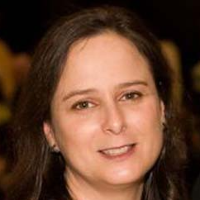 Co-Presenter
Co-PresenterLaureen holds Bachelor's and Master's degrees in architecture from the University of
Illinois and is a licensed architect in Illinois & Wisconsin as well as having received approval for reciprocal licensure across the country via NCARB certification. She has also built a successful 30-year+ practice in the design and construction of commercial buildings, multi-family projects, single family homes, and interiors. Additional experience includes ratings, inspections, and certification application processing for a variety of commercial &
residential properties through LEED BD+C, LEED ID+C, LEED for Homes & LEED
for Homes Mid-Rise, Energy Star Homes & Energy Star Multifamily High Rise, Enterprise Green Communities, and the WERS (Water Efficiency Rating Score).
Other accreditations & certifications include USGBC LEED® for Homes QAD, RESnet/HERS Energy Rater, LEED for Homes Green Rater, LEED AP BD+C, LEED AP HOMES, USGBC LEED® Faculty™, and WERS Faculty & Verifier.
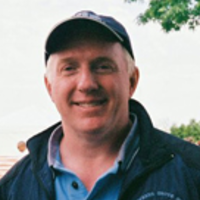 Co-Presenter
Co-PresenterMr. Blissard holds a Bachelor's degree from Arkansas State University and has built a long, successful career in the education industry. While an educator, he completed renovations and provided part-time construction services over a period of 15 years.
In 2010, his focus shifted to the construction industry full-time and included training with accreditation in multiple green building certification programs. As a BPI Building Analyst, RESNET Field Inspector and WERS Candidate, many of his projects have focused on multi-family certifications which includes water systems inspections and testing.
 2021-06-02 00:00:00 MT
2021-06-02 00:00:00 MT 2021-06-02 00:00:00 MT
2021-06-02 00:00:00 MTRainwater catchment is becoming increasingly common. Regardless if it is an active system with tanks and pumps or a passive system using natural systems, it is a great source of alternative water that can and should be used. Leveraging this natural resource is better for the environment in many ways. This session will look at common installation and operational issues that can easily be avoided if planned for ahead of time.
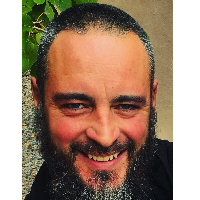 Speaker
Speaker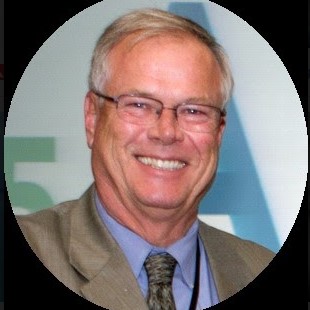 Panelist
PanelistReese Baker, owner and founder of The RainCatcher Inc., is a certified permaculture designer who has been involved with green building, organic farming, water harvesting, erosion control, ecological restoration and permaculture in the Santa Fe area for over 18 years. He currently owns The RainCatcher Inc. based out of Santa Fe, NM. He holds a B.S. in Biology/Botany from The University of New Mexico and is currently pursuing a Ph.D in Biology at The University of New Mexico with focus on the bioremediation of stormwater.
He has also taught classes on water harvesting, permaculture, and erosion control at Ecoversity, Plants of the Southwest, Santa Fe Preparatory School, Quivira Coalition, Earthworks Institute, Arboretum Tome, Permaculture Institute, Santa Fe Botanical Gardens, and Santa Fe Community College.
 2021-06-02 00:00:00 MT
2021-06-02 00:00:00 MT Panelist
PanelistFernando is the Managing Director for Hydraloop, Inc.
Mr. Ramirez is a social impact global business development professional with focus on water and energy issues. He has extensive international experience with next generation technologies designed to make a difference to global challenges.
Fernando is leading the North America expansion for CES 2020 Best of the Best winner, Hydraloop.
Graywater is a great alternative water source. Many homes produce 20-50 gallons a day; that is 600 - 1,500 gallons a month! It is a growth market throughout the West. This panel is going to focus on emerging technologies in the residential and commercial graywater market. Discover the types of systems that are coming to market that will make reusing graywater easier.
 Panelist
PanelistShawn is an ARCSA Accredited Professional and is a former member of the educational committee for the organization. Shawn is also a silent member of the NSF/ANSI 350 Standard for Water Reuse Treatment Systems.
After receiving his Bachelor of Science in Wood Science and Forest Products with emphasis on Marketing and Manufacturing and Masters of Forestry from Virginia Tech, he officially joined RMS in the fall of 2014 as National Accounts Manager.
Shawn installed his first rainwater harvesting system for potable use when he was 11. He has been involved with the alternate water reuse industry for 18 years and has a great understanding of its evolution into what it has become today.
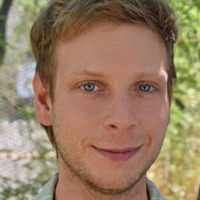 Moderator
ModeratorCharlie Alcorn is a Project Manager and Educator with Watershed Management Group where he leads installations for rainwater and greywater harvesting systems and teaches classes on rainwater harvesting principles. Charlie graduated with a degree in Physics from Dickinson College in Carlisle, Pennsylvania. He has worked in communications and as an educator at environmental nonprofits and in the wastewater and biosolids industry. In 2016, Charlie moved to Tucson, Arizona where he received a certificate for Water Policy from the University of
Arizona. He is a certified water harvesting design practitioner with Watershed Management Group.
Graywater is a great alternative water source. Many homes produce 20-50 gallons a day; that is 600 - 1,500 gallons a month! It is a growth market throughout the West. This panel is going to focus on emerging technologies in the residential and commercial graywater market. Discover the types of systems that are coming to market that will make reusing graywater easier.
 2021-06-02 00:00:00 MT
2021-06-02 00:00:00 MT Speaker
SpeakerLearn a fast, easy and efficient way to collect dynamic water pressure (psi) while troubleshooting or performing drip audits or assessments. Locating the root of the problem in a drip system can be a tricky situation. If you are able to test psi, it can turn a chore into an easy task.
The Irrigation Association recommends collecting psi from three points within the drip system during a drip irrigation audit. The traditional way creates waste, is time-consuming and is not the most efficient method. With this DIY, easy-to-build drip psi testing tool, you can check your three psi areas within minutes and move on to the next zone without losing a drop of water.
Perhaps you are not performing a drip audit, but the system has issues that you need to figure out. With this tool, you place the rubber tip up against the orifice of the drip emitter or emitter tubing outlet, and you can move from emitter to emitter with great ease without wasting any water or poking a single hole. A psi reading is immediate and can help you quickly assess where issues are, without making a mess or wasting time.
If you are in California and performing a Model Water Efficient Landscape Ordinance (MWELO) audit, this method will save you time and get you to the next step faster.
Learning objectives:
 Moderator
ModeratorDoug is a lifetime American Rainwater Catchment System Association (ARCSA) member, an Accredited Professional and an ex-Board member of ARCSA. He is a prolific writer and his articles have appeared in The New York Times, Water Efficiency Magazine, Home Power, Taos News and Water News, among others. He also has a regular monthly column in the Santa Fe New Mexican. He is co-author of two water studies that have been widely published: “Rainwater Harvesting Industry Market Size and Trends” and “First-Ever Long-Term Water Conservation Rebate Study”.
Doug is an EPA WaterSense Partner with Certification in Irrigation Auditing. He is an active member of the City of Santa Fe Water Conservation Committee. He is currently a member of the International Code Committee (ICC) working group that is drafting the ICC Rainwater Harvesting Building Codes. Doug is also a certified Permaculture Designer. Doug designs and consults on rainwater and water reuse systems locally and around the country.
Kris Loomis' passion and curiosity of irrigation and figuring out how things work was the driving force for her to obtain Certificates in Irrigation Design (CID), Landscape Irrigation Auditing (CLIA) and Landscape Irrigation Auditing Drip Irrigation Specialty (CLIA-D) through the Irrigation Association. She is also Qualified Water Efficient Landscape (QWEL) certified and instructor.
She has over 20 years of experience working in the Landscape and Agricultural irrigation business on the supply and design side. On the supply side, she has the advantage of knowing what types of products there are to choose from. On the design side, she knows how to design a system to deliver the right amount of water at the right time.
Her primary job is working at a water wholesaler as a Senior Programs Specialist in Water Use Efficiency. This has its advantages as efficiency and avoiding water waste is also an important element in irrigation systems.
Kris is also an adjunct instructor, teaching Landscape Irrigation for 20 years and QWEL courses as well at Santa Rosa Junior College and Mendocino Community College.
Learn a fast, easy and efficient way to collect dynamic water pressure (psi) while troubleshooting or performing drip audits or assessments. Locating the root of the problem in a drip system can be a tricky situation. If you are able to test psi, it can turn a chore into an easy task.
The Irrigation Association recommends collecting psi from three points within the drip system during a drip irrigation audit. The traditional way creates waste, is time-consuming and is not the most efficient method. With this DIY, easy-to-build drip psi testing tool, you can check your three psi areas within minutes and move on to the next zone without losing a drop of water.
Perhaps you are not performing a drip audit, but the system has issues that you need to figure out. With this tool, you place the rubber tip up against the orifice of the drip emitter or emitter tubing outlet, and you can move from emitter to emitter with great ease without wasting any water or poking a single hole. A psi reading is immediate and can help you quickly assess where issues are, without making a mess or wasting time.
If you are in California and performing a Model Water Efficient Landscape Ordinance (MWELO) audit, this method will save you time and get you to the next step faster.
Learning objectives:
 2021-06-02 00:00:00 MT
2021-06-02 00:00:00 MTIn this session, Hope digs into the codes and where water has gained traction, and where it's still struggling to get a foot hold. There's also a discussion about codes vs. voluntary programs and the effectiveness of each.
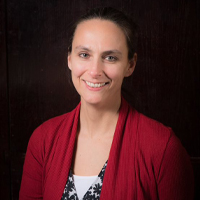 Speaker
SpeakerHope Medina is an energy/green code consultant for Colorado Code Consulting. She holds several International Code Council (ICC) certifications that she utilizes as a plan analyst, inspector, and instructor.
Hope is Co-Chair of the Colorado Chapter of ICC Code Development Committee for the green codes and standards. Hope has been involved with the development of the International Green Construction Code, and took the lead in the Green Code Collaboration Group which worked with stakeholders nationally on improving the 2015 International Green Construction Code (IgCC).
Ms. Medina has served on the National Green Building Standard consensus committee for several cycles. She currently co-chairs the water efficiency task group, and chairs the mixed-use task group of the National Green Building Standard.
Hope is the Co-Chair of ICC’s Sustainability Membership Council, and chairs the advocacy subcommittee. She is a member of ICC’s Sustainability, Energy, and High-Performance Code Action Committee (SEHPCAC).
 Moderator
ModeratorMike Collignon is the Executive Director of the Green Builder® Coalition, an organization he co-founded in 2010. He engages in national and state-level advocacy and publishes regular content for Green Builder® Media. Mike is also the Chair of the WERS Development Group and the Co-Chair of the Next Generation Water Summit. Finally, he has served as the voice of Green Builder® Media’s online and in-person events from 2012–present.
 2021-06-02 00:00:00 MT
2021-06-02 00:00:00 MT Panelist
PanelistMike Collignon is the Executive Director of the Green Builder® Coalition, an organization he co-founded in 2010. He engages in national and state-level advocacy and publishes regular content for Green Builder® Media. Mike is also the Chair of the WERS Development Group and the Co-Chair of the Next Generation Water Summit. Finally, he has served as the voice of Green Builder® Media’s online and in-person events from 2012–present.
Christoph Lohr is IAPMO’s Vice President of Strategic Initiatives. As part of his duties he provides industry leadership through participation in strategic industry initiatives, and provide technical support to all IAPMO’s business units as needed. He has over a decade of experience in designing plumbing systems for healthcare, laboratory, hospitality, sports, and university projects. He is a licensed professional engineer (PE) in six states, has his Certified-in-Plumbing-Design (CPD) certification from ASPE, is a LEED AP BD+C, and has his ASSE 12080 Legionella Mitigation Specialist designation. He has spoken at the ASPE 2018 Convention, Legionella 2018 and 2019 conferences, HITS Consortium, NIBS, and the ACEEE Hot Water Forum and has written over 50 articles and blog posts on the topics of water, legionella, medical gas, and leadership. Christoph's professional activities in the industry extend into multiple committees including ASPE Phoenix Chapter, ASPE Society, ASPE Legionella Working Group, ASHRAE Committees, PIPE Trust of Arizona, AWWA Plumbing Premise Committee, among others. He consistently looks to find long-term, holistic solutions that positively impact public health and safety, particularly in the world of water and plumbing. He is a distinguished graduate from the Virginia Military Institute, with a Bachelor of Science in Mechanical Engineering.
 2021-06-03 00:00:00 MT
2021-06-03 00:00:00 MTHealthy watersheds are critical to healthy water. In this session we will review an integrated, client partnership approach that views the whole watershed as one. Included in this approach are client agreements and dashboards of ongoing projects and programs with a stress on story-telling messaging.
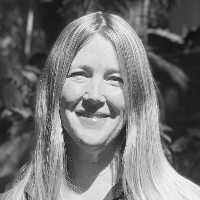 Speaker
SpeakerRegina Hirsch has nearly 20 years of experience monitoring and implementing watershed-based Best Management Practices solutions and assessing effectiveness cumulative of non-point source pollution treatments. After catching the watershed monitoring bug at the Central Coast Regional Water Quality Board and the Morro Bay National Estuary Program, she founded Sierra Watershed Progressive, a consulting/contracting firm which focuses on sharpening tools for LID Best Management Practices aimed at rehydrating watersheds and enhancing instream flows throughout California. In addition, Regina is an executive board member of the California Water Reuse Policy Council. Regina Hirsch’s goal is to focus on integrated, collaborative appropriate decision making when it comes to water, energy, plants, soils and most of all, community.

